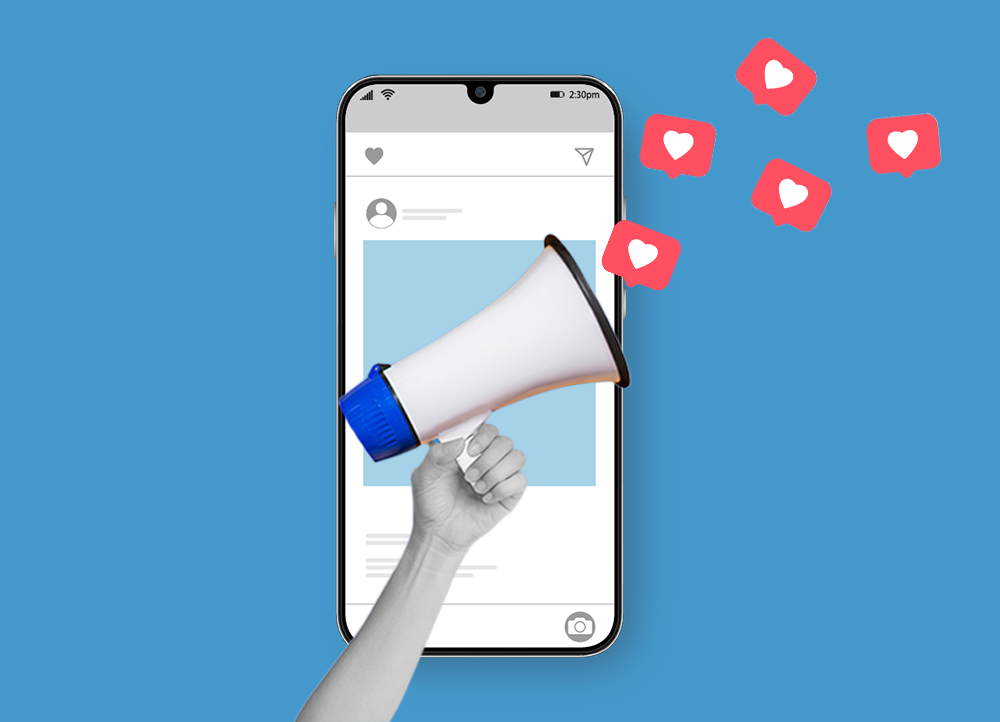Followed by millions, showered with likes, and courted by brands, social media influencers are big business. In fact, it’s estimated the total spending on influencers by brands could reach $16.4 billion this year. Influencers organically build-up a relationship with their audience, who feel they have a personal connection with them, and it is this personal connection that is so valuable. Brands know an influencer’s followers are likely to trust their recommendations, which is why they pay them to showcase their products.
The Power Of The Influence
While social media influencers are a relatively recent phenomenon, the concept of influencer marketing has been around a lot longer. In essence, an influencer is simply someone who has the power to affect somebody’s purchasing decisions. A celebrity endorsing a product is a classic example of influencer marketing in action.
Now, a digitally savvy new breed is taking advantage of the opportunities social media offers. The landscape itself is constantly shifting and while Instagram is still a popular platform with influencers, many now feel TikTok is the place to be. According to a 2021 survey, 87% of Tik Tok influencers garner higher audience engagement than on other social media platforms. The algorithms of TikTok also allow small accounts to reach hundreds of thousands of views. This means that, if your content is strong enough, you can gain followers in a short space of time.
Is Bigger Better?
- Nano-influencers: 10,000 followers or lower
- Micro-influencers: 10,000- 100,000 followers
- Macro-influencers: 100,000- 1 million followers
- Mega-influencers: over 1 million followers
So, which influencers are the most sought after? The obvious answer is those with the most followers. A mega-influencer like Love Island star Molly Mae Hague, for example, has 6.3 million followers and has enjoyed paid partnerships with household names like Starbucks and a string of high-profile fashion brands.
However, influencers of all shapes and sizes have their merits. Micro and nano influencers, for example, are generally perceived as more authentic by followers and are more niche-oriented. Many marketers find that micro-influencers tend to produce better results than mega-influencers, as they have better engagement with their audience. So, an influencer’s value for marketers is not just about quantity, it’s also about quality.
Reaching Out
Influencers can play an important role in reinforcing the message of a campaign. One example is our recent ‘Nature Calls’ campaign for Scottish Water, which called on the public to bin wet wipes instead of flushing them down the toilet to help protect our coastlines and wildlife. We also encouraged them to collect oils, fats and grease in a container instead of pouring them down the sink and bin make-up removers.
We reached out to influencers in areas like skincare, family and travel, who were passionate about promoting the cause as it aligned with their values. By tapping into their followers, we were able to target the most relevant audience for ‘Nature Calls’.
Influencers often have a specific niche: TikTok sensation Francis Bourgeois is enthusiastic about trains, ‘Cleaning with Mario’ has amassed almost 150,000 Instagram followers by sharing cleaning tips, and Vicky’s donuts is a big hit with fans of sugary treats. While there’s a good chance you’ll find influencers whose interests match your campaign, finding the right one takes research. There are various factors to consider, including age, previous partnerships, audience sentiment, lifestyle and recent posts.
Social media tools can be a great asset when deciding which influencer to go with. Hootsuite, for example, can help you find influencers by monitoring online conversations about your campaign area across many social platforms. Once you have a shortlist of influencers you can add them to a stream to monitor the content they share and the accounts they engage with. This will help you decide how relevant the influencers are to your audience.
Authenticity Is Key
It is increasingly important for influencers to come across as authentic. For example, some fans started questioning if Francis Bourgeois was a genuine trainspotter when photos surfaced showing him with gelled hair and wearing trendy clothes. In the end, he had to post a video explaining that when he was younger, he kept his passion secret to fit in with others.
Social media users are also getting smarter at picking-up on sponsored content. The more organic the content feels, the more relatable it is. If it feels too much like an ad, people will be less likely to engage. TikTok in particular is a platform that thrives on the idea of authenticity (or the illusion of it at least).
If an influencer is continuously posting sponsored ads, they are likely to lose credibility. The quality of the content also has to be taken into account. For example, if a promotional post on Instagram feels noticeably different to the influencer’s usual content, it can be perceived as ‘fake’ by followers.
Word-of-Mouth For The Online Age
With so many different distractions vying for our attention, it’s getting harder for brands to cut through the noise. Influencers, on the other hand, have built-up communities around them that look forward to viewing their content, giving brands a receptive, ready-made audience to tap into. In a lot of ways, influencers offer a modern take on word-of-mouth; if somebody you trust recommends a product to you, the chances are you’re going to be interested.
Share on & tag us @alwaysbecontent




